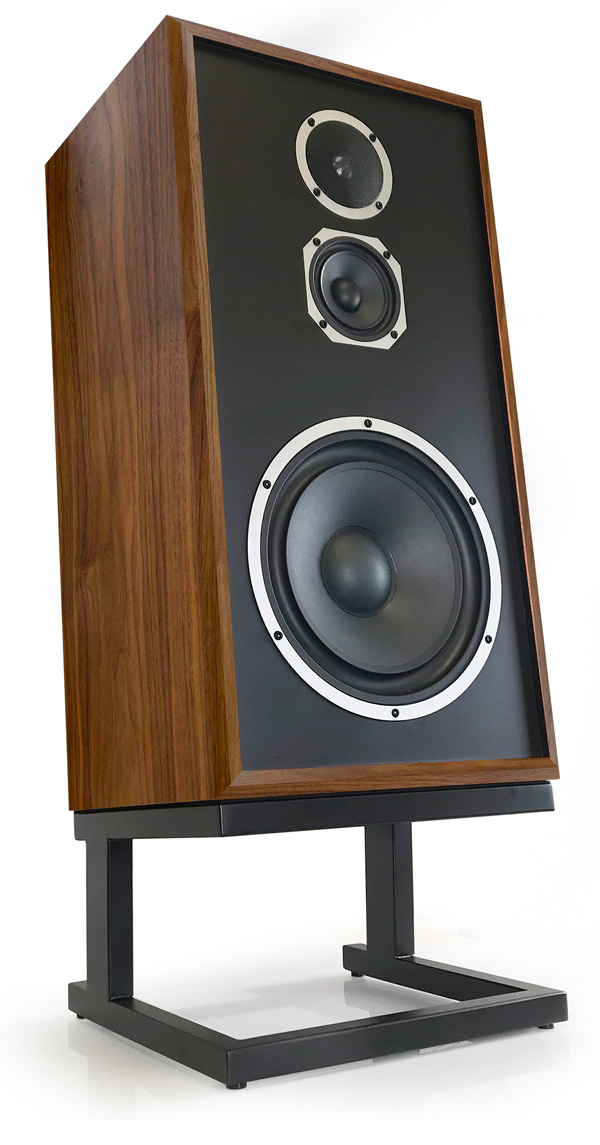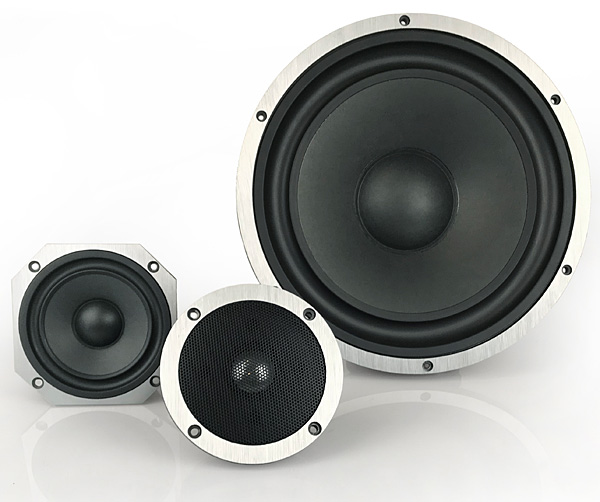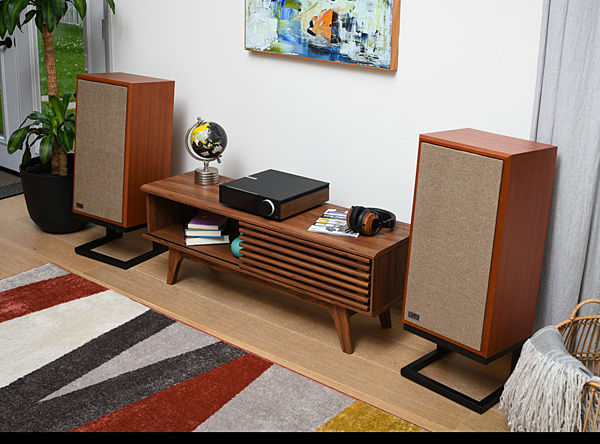KLH Model Five Loudspeaker Review

AT A GLANCE
Plus
Clean, uncolored sound with solid bass
Cool vintage looks
Three-way switch to modify mid- and high-frequency output
Minus
Best sound with grilles off
THE VERDICT
The new, re-imagined KLH Model Five represents an exceptional update to an iconic speaker design.
KLH was originally founded in 1957 as the KLH Research and Development Corporation by three partners: Henry Kloss, Malcolm S. Low, and Josef Anton Hofmann. Today, the best-known of that trio is the late Henry Kloss. A true A/V renaissance man, Kloss was instrumental in establishing four loudspeaker companies: Acoustic Research, KLH, Advent, and Cambridge SoundWorks. In the mid-1970s, he also founded a short-lived company to market his then-revolutionary Advent VideoBeam projection system. Kloss further worked to improve FM radio and brought Dolby B noise-reduction to the consumer audio cassette.
When Indiana-based Kelley Global Brands bought the rights to the KLH name in 2017, it took on the significant challenge of reviving a long-idled loudspeaker brand. The first step for the company was to release a lineup of new KLH loudspeakers. While well received, none of these had a direct connection to the originals—understandable, since loudspeaker design has advanced significantly since KLH's glory years. But there's still plenty of love in the audio world for classic speaker and component designs, and the Model Five is about as classic as they come.

Acoustic Suspension
KLH designs of the '60s used the then-rare acoustic suspension technology developed and patented by Edgar Villchur, the founder of Acoustic Research (AR), a company that Kloss had assisted in launching. Kloss left after a year or two and licensed the acoustic suspension design when he started KLH.
Ported loudspeakers of the 1960s were big and largely "cut-and-try" since repeatable criteria for optimizing their design didn't yet exist. Villchur's invention of acoustic suspension might not have been as revolutionary as Philo Farnsworth's cathode ray tube (which made television possible), but it turned loudspeaker design on its... um...ear. Simply put, acoustic suspension relies on a woofer with a suspension too floppy to work in other types of designs. Instead, the compression of the air inside its relatively small, sealed cabinet acts as a spring to keep the woofer under control. The result was surprisingly powerful bass from a cabinet far smaller than conventional designs of the 1960s.
With the eventual development of detailed design guidelines for ported speakers, and (eventually) readily available computer tools to optimize them, fewer speakers today use acoustic suspension. So why use it here? The most obvious reason is the classic element: You can't make a speaker a ported design and call it the "KLH Model Five" with a straight face. But there are also performance reasons for choosing acoustic suspension, among them the fact that an acoustic suspension loudspeaker rolls off at 12dB/octave below its designed driver/box resonance. (A ported design in contrast rolls off at 24dB/octave below its port resonance.)
A multitude of other variables are involved. Ported speakers can be a bit more efficient, but not always. They have a reputation among audiophiles for boomy bass, though given a good design that point is arguable. You won't find audiophiles either clinking our glasses or holding our noses over acoustic suspension. It's simply a valid design choice, enhanced in this case by a bit of nostalgia.
Features
The new KLH Model Five closely resembles the '60s version, though with some differences. Its 3-way driver complement consists of a 1-inch aluminum dome tweeter, a single 4-inch pulp paper cone midrange driver, and a 10-inch pulp paper cone woofer. The crossover frequencies are 380Hz and 2.85kHz, both second order, and the midrange is housed in its own enclosure inside the main cabinet.

Loudspeaker drivers are far better today, and more strategically deployed, than they were a half-century ago. The old Model Five used a pair of 5-inch midrange drivers mounted side- by-side. (No one apparently worried at the time about the uneven horizontal dispersion due to comb-filtering that side- by-side drivers generate.)
I once read that during KLH's wilderness years Henry Kloss deliberately selected a tweeter for the original Model Five with less high-frequency extension than the best tweeters then available out of concern that the clarity might reveal the harshness he experienced in many recordings of the time. That story may be apocryphal, but either way I doubt this was one of the design decisions made for the new Model Five!
Wide speaker cabinets have long gone out of style, but with a woofer identical in size to the original, that design choice was unavoidable here and makes for a cabinet with a near 14-inch width. But I heard no audible issues related to this, nor from the small, possibly diffraction-generating, lip visible around the front baffle with the speaker's grille removed.
The Model Five's cabinet is finished in a West African Mahogany (English Walnut is a second option) real wood veneer complemented by a linen grille. Lighter-colored linen grilles are available for an extra $200 but I found the stock version to be perfectly acceptable. The speakers are more attractive with their grilles in place, but they sound (and measure) better with them off. A pull tab at the bottom allows for easy removal, and the grilles can be reinstalled via the hidden magnets that hold them in place. (Velcro was used for this purpose on the original.)

Around back is a single pair of 5-way binding posts. The rear panel also includes one other carryover: a three-way switch designed to slightly increase or decrease the mid- and high-frequency output. The neutral position is Hi, Mid provides a reduction of 1.5dB, and Low a 3.0dB cut. While this is not exactly intuitive, it's reportedly the same configuration used on the originals. For me, the Mid position worked best.
The Model Fives are too big for a standard tall speaker stand and too short to function as a freestanding tower. Fortunately, they come with short stands that tilt the speakers slightly backward to aim the drivers' radiation pattern at a seated listener. There's no way to solidly fasten the speakers to the stands; the 44-pound weight does mean that gravity will keep them secure, but it's not possible to easily "walk" them around on the floor to tweak for the best setup position. There's also no provision for spiking the speakers and stands to the carpet (spikes are an audiophile trend that hadn't yet caught on in the '60s).





























































